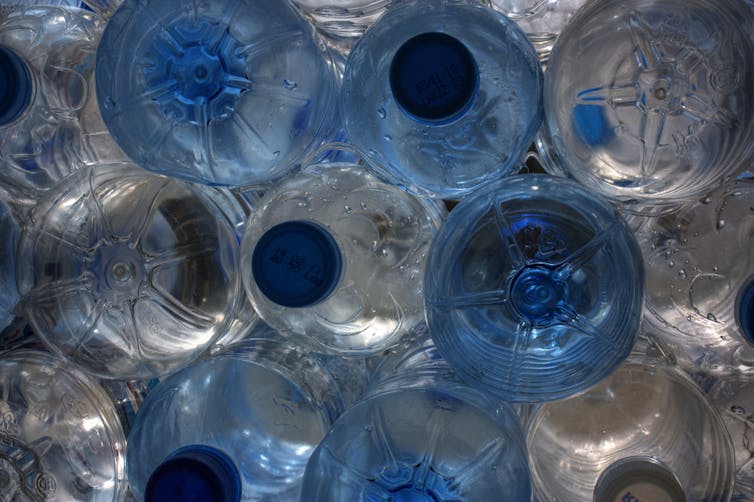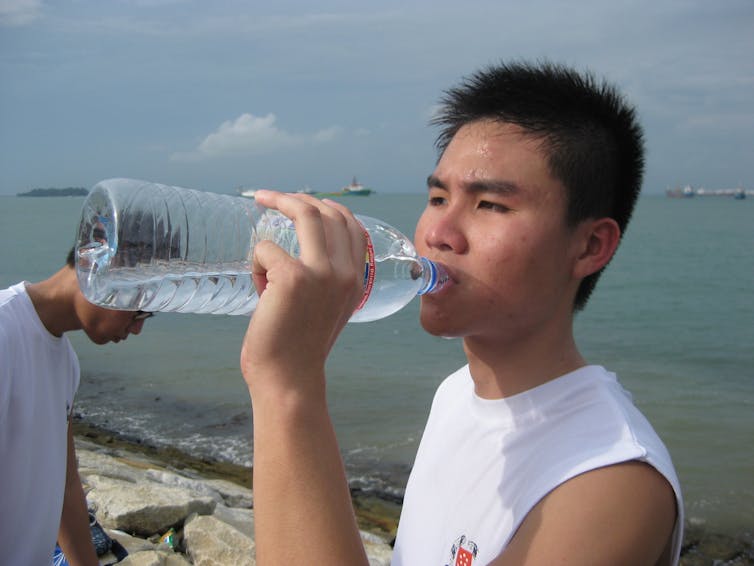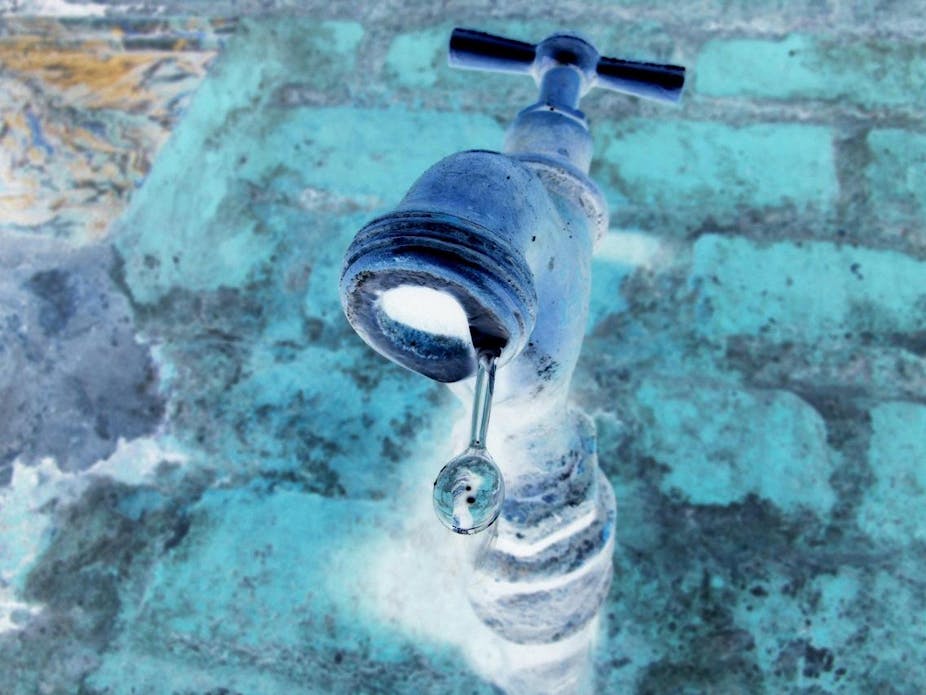Drinking enough water is very important during long periods of physical activity or recreational pursuits. But there are rare instances when too much fluid intake can be harmful, and even lead to death.
Earlier this week, the ABC reported on the unfortunate death of a bushwalker in Tasmania’s north western ranges. The coroner’s report said the most likely cause of death was an “exercise-related medical condition caused by drinking too much water during prolonged exertion.”
This condition is known as hyponatremia, which quite literally means low (hypo), sodium in the blood (natremia). Hyponatremia is relatively common among people with certain disease conditions and among athletes, such as marathon runners. But it’s very important to recognise that harm and risk of death due to hyponatremia are very low.
Sodium (Na) is an important nutrient obtained from a normal diet. Sodium levels in the body are impacted by the intake of salt, which is contained in a variety of common foods. It’s unlikely that the bushwalker died because of low dietary intake of sodium because only a small amount is required for our body to function, even during exercise. Indeed, scientific reports indicate that marathon runners diagnosed with hyponatremia don’t have low sodium levels in their blood.

The coroner’s report outlined that the deceased bushwalker had a swollen brain (cerebral edema), which in his opinion was due excessive water intake. But how can water lead to death due to hyponatremia?
Excessive or low water intake and excessive or low sodium intake can initiate a series of hormonal reactions largely mediated by the antidiuretic hormone. These reactions lead to either retention of water or its elimination from the body through urine. This process maintains a normal level of fluid and blood volume in our body.
A dramatic increase in water ingestion leads to a so-called “water intake overload”, which may be associated with a decrease in the volume of circulating blood, even though total body fluid volume is greater. This can, in turn, lead to abnormal accumulation of fluid in the body or edema (swollen brain). Decreased blood volume stimulates the release of the antidiuretic hormone, which leads to further water retention and a worsening of the condition.
Blood pressure is an important way of regulating oxygen delivery to all of the body, including the muscles and brain. And oxygen is important for keeping our muscles moving during exercise. The oxygen supply to the brain influences decision-making processes and cognitive functioning. Irregular blood pressure can lead to low oxygen levels. When combined with cerebral edema (as suggested by the coroner’s report), this can lead to confusion, disorientation, and unconsciousness.

While common in pathological states, hyponatremia occurs less frequently in healthy exercising adults. There are reports of marathon runners having hyponatremia but in nearly all cases, the condition can be treated and dangerous situations avoided.
The low risk of suffering from hyponatremia by eliminating water intake is far outweighed by the gains of improving exercise performance by drinking the correct amount of water, regularly. The recommended intake of fluid is generally small – in the range of 150ml to 200ml for every 15 to 20 minutes of exercise.
Exercising adults should know about effective fluid and dietary intake before and during sport or exercise. While these are influenced by severity (walking versus running), duration and environmental conditions (hot or cold, dry or humid) of exercise, the simple recommendation for avoiding fatigue (due to dehydration) as well as hyponatremia, is for people who are exercising to drink according to thirst, that is, before, during and after exercise.

